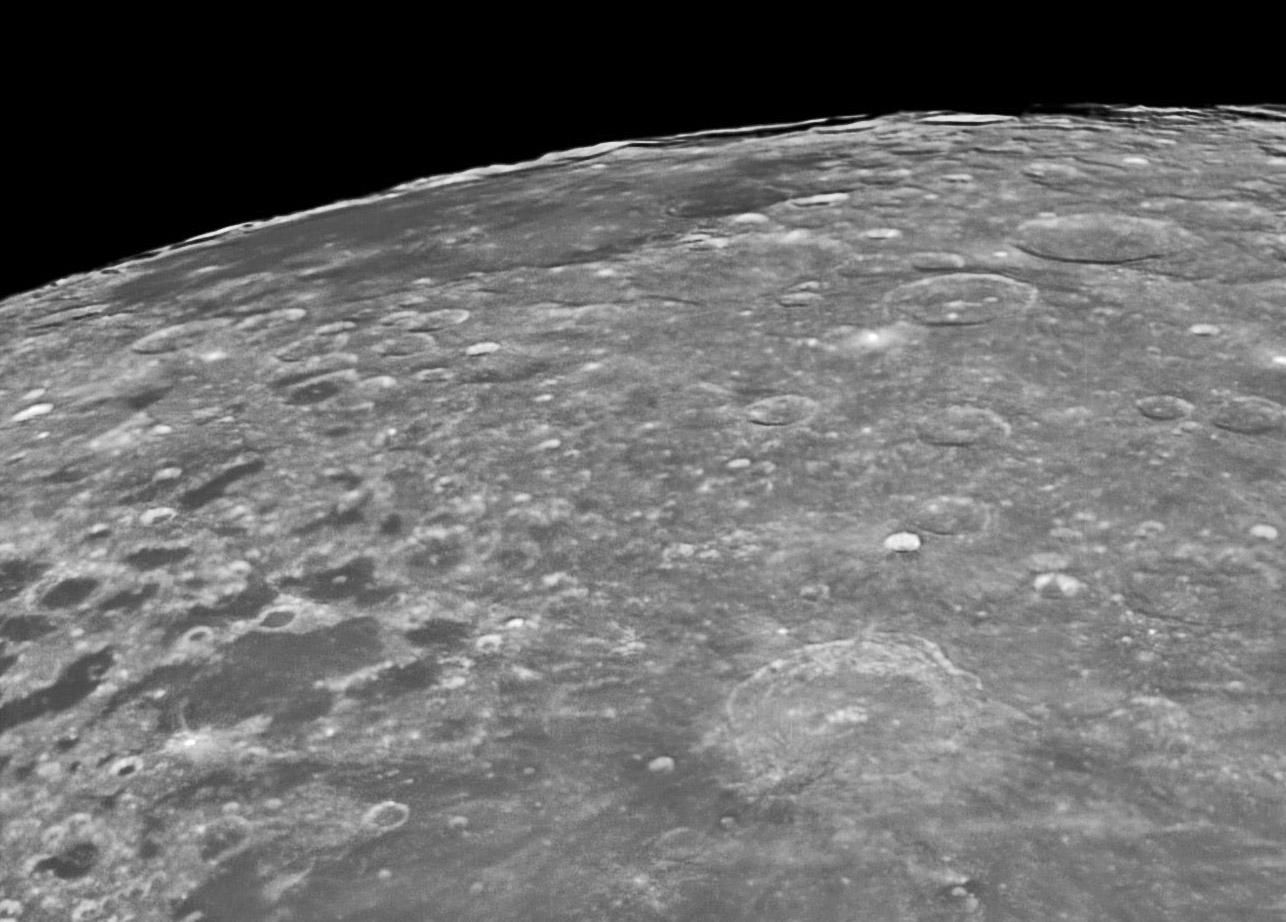|
|
| (8 intermediate revisions by the same user not shown) |
| Line 1: |
Line 1: |
| | __NOTOC__ | | __NOTOC__ |
| | =A Young, Deep Maria= | | =A Young, Deep Maria= |
| | + | <!-- Start of content --> |
| | + | <div class="post" id="post-764"> |
| | | | |
| − |
| + | <div class="storycontent"> |
| − | <div class="post" id="post-764">
| + | <p>[[File:12_4_06_LPOD_Smythii.jpg|12_4_06_LPOD_Smythii.jpg]]<br /> |
| − |
| |
| − | <div class="storycontent">
| |
| − | <p>[[File:12_4_06_LPOD_Smythii.jpg|12_4_06_LPOD_Smythii.jpg]]<br />
| |
| | <em>image by [http://mailto:swalker@SkyandTelescope.com Sean Walker]</em></p> | | <em>image by [http://mailto:swalker@SkyandTelescope.com Sean Walker]</em></p> |
| | <p>The limb is like a treasure hunt, with the lucky searcher sometimes delighted with mystery and surprises. True discovery is rare, for mechnical explorers (orbiters) have robotically mapped each hectacre of the lunar surface. But eyeball exploration can easily lead to seeing features for the first time. In this image of the first minutes of of this lunation’s sunset, the farside rim of Smythii basin is illuminated and the nearside scarp is just detectable by its thin shadow. Little trace of Smythii’s ejecta is visible for many younger craters dig into the surface outside the rim, demonstrating the relatively old age of the basin. The floor is obviously two-toned with dark lava at the far right (in association with the floor-fractured Kiess) and the upper left. The latter is some of the Moon’s youngest maria, with an estimated age of 1-2 billion years. The mare surface of Smythii is remarkable in being 5 km lower than the average elevation of the Moon, and in fact the center of the basin is 8 km lower than its highest rim segment. This shallow-looking basin is the same depth as the Orientale basin!</p> | | <p>The limb is like a treasure hunt, with the lucky searcher sometimes delighted with mystery and surprises. True discovery is rare, for mechnical explorers (orbiters) have robotically mapped each hectacre of the lunar surface. But eyeball exploration can easily lead to seeing features for the first time. In this image of the first minutes of of this lunation’s sunset, the farside rim of Smythii basin is illuminated and the nearside scarp is just detectable by its thin shadow. Little trace of Smythii’s ejecta is visible for many younger craters dig into the surface outside the rim, demonstrating the relatively old age of the basin. The floor is obviously two-toned with dark lava at the far right (in association with the floor-fractured Kiess) and the upper left. The latter is some of the Moon’s youngest maria, with an estimated age of 1-2 billion years. The mare surface of Smythii is remarkable in being 5 km lower than the average elevation of the Moon, and in fact the center of the basin is 8 km lower than its highest rim segment. This shallow-looking basin is the same depth as the Orientale basin!</p> |
| Line 12: |
Line 11: |
| | <p><strong>Technical Details:</strong><br /> | | <p><strong>Technical Details:</strong><br /> |
| | 4 December 2006, roughly 9:15 EDT. 7″ Maksutov-Newtonian operating at about f/24 + Lumenera LU075 camera. Mosaic with each section a stack of 200 frames. </p> | | 4 December 2006, roughly 9:15 EDT. 7″ Maksutov-Newtonian operating at about f/24 + Lumenera LU075 camera. Mosaic with each section a stack of 200 frames. </p> |
| − | <p><strong>Related Links</strong><br /> | + | <p><strong>Related Links:</strong><br /> |
| | Rükl plates 38 & 49<br /> | | Rükl plates 38 & 49<br /> |
| − | [http://www.lpod.org/?m=20060404 More Smythiis]</p> | + | [[April_4,_2006|More Smythiis]]</p> |
| − | <p align="center"> | + | <p><b>Yesterday's LPOD:</b> [[December 5, 2006|A New Bible]] </p> |
| − | <i>Christmas is coming - consider leaving a list of lunar books on top of a spouse’s pillow - just make sure you include the LPOD URL so that you support [http://www.lpod.org/?page_id=591 LPOD] when buying lunar books (or ANY book) from Amazon!</i></p> | + | <p><b>Tomorrow's LPOD:</b> [[December 7, 2006|Which Way is Up?]] </p> |
| − | </div>
| + | <!-- Removed reference to store page 2 --> |
| − |
| + | </div> |
| − | | + | <!-- End of content --> |
| − | ---- | + | {{wiki/ArticleFooter}} |
| − | ===COMMENTS?===
| |
| − | Click on this icon [[image:PostIcon.jpg]] at the upper right to post a comment.
| |




